Norse mythology has always been a rich - and, more importantly, public domain - vein for a quick and easy fantasy universe to play around in, whether you're writing your own Viking epic based on actual Scandinavian sagas or just need a bunch of bearded gods and weird monsters to populate your mostly original fantasy RPG. Some games are more faithful than others to this source material: you have many cases where a game might be co-opting some of that "mead and axes" flavor even if they're not expressly set in Scandinavia; those that take the middleman route and more specifically Tolkien-inspired; and others still where the various World Serpents and Frost Giants are part of a larger bestiary that's a disjointed chimera of different cultures and mythologies, that may or may not actually also include a chimera. Then there you have the rare (but not that rare) few that are absolutely and deliberately riffing on Odin and pals, frequently putting some Surströmming-scoffing schmuck in charge of averting Ragnarök at all costs.
I've been playing a lot of 2018's God of War reboot over the past week, which is very much in the business of hitting giant icy monsters with lightning hammers and frost axes, and I've marvelled not only at the game's general visual quality and combat mechanics - recalling the axe never gets old - but in just how accurately and lavishly they've bothered to portray the world (or nine worlds, to be precise) of its pre-medieval Germanic setting. There's so much to see and explore, and so many lore markers that tell you various legends about the Jotun, the Aesir, the Vanir, the Elves, the Dwarves, and the few not-dead humans in this frosted-over nightmare land in which an older, embittered Kratos seeks his solitude, give or take a little sassmouth godling under his protection.
With all that going on, I've been wracking my noggin (the Nog) for other game developers that adhere to the legacies and myths of the Norse pantheon quite as devotedly as Cary Barlog and his team. There's very few examples that can match it, but we've seen so many games from so many different genres and development regions take a spin at it that I wanted to enumerate a few here. To judge their aptitude with Norse mythology, or at least my admittedly finite understanding of same, I've rated each of these games by how Norse they are, from Norse to Norser to Norsest.
Here's a few scoring criteria:
- More than five Aesir, Vanir, or Jotun either appear, are mentioned, or referenced via some bootleg equivalent.
- Odin, Loki, Hel, or Surtr is the final boss. Or any combination thereof, in the case of branching narratives.
- The game lets you hop on the Bifrost and switch to any of the nine realms besides Midgard.
- Valkyries. The more heavy metal, the better.
- Throw in a World Serpent too. Even Final Fantasy VII had one of those.
- If there's little to no talk of the Norse pantheon and the game's more of a historically accurate secular simulation of viking life, I'm willing to give it an "Ag-norse-tic Bonus" for bucking the trend.
The Lost Vikings
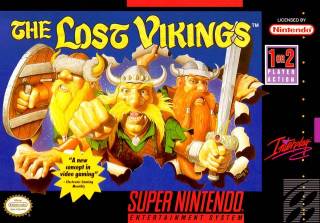
Maybe I'm just hopelessly stuck in the 1990s, but I'd like to think that Blizzard Entertainment's The Lost Vikings is still the first example people think of when told to name a viking-related video game. The terrible punnery for the sequel's subtitle, Norse by Norsewest, is also in some small part the inspiration for this ridiculous rating system I have going on here.
While the three protagonists are indeed as viking as they come, the games themselves aren't so much entrenched in the mythos of Odin and the Aesir. I think they're referenced a few times, but for the most part the vikings are on their own contending with tomato aliens and time-travel (and, in the sequel, robotic enhancements; not the first game to dabble with cyber-vikings, as we'll soon unfortunately discover).
Rating: Norse.
Völgarr the Viking
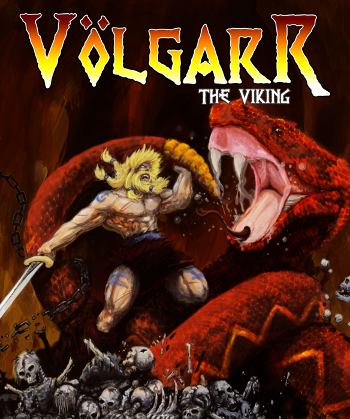
A more recent example of a viking platformer, Völgarr the Viking has its titular berserker fighting his way across a bunch of varied worlds to reach and defeat a dragon. Notoriously difficult, the player is given few chances to upgrade themselves to make the road easier and those upgrades can disappear in a single moment of carelessness. The game can get you so stressed that you might even end up saying regrettable things about a coworker's offspring.
Völgarr is a viking, as the game's title informs us, but his journey of vengeance is more of a Conan-esque tour of generic fantasy races. There is a big snake, but it's not a world serpent. However, it does earn a few points for getting Odin involved, and while valkyries never show up in the flesh (as far as I'm aware) there is a big statue of one that you dedicate all your treasure to.
Rating: Norse.
Prophecy I: The Viking Child
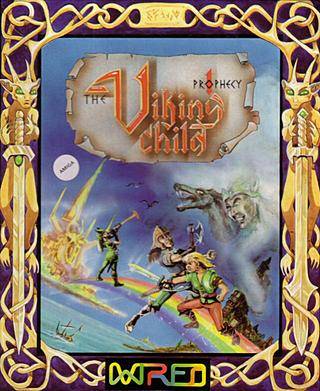
A blast from my own past, The Viking Child is probably the first time I encountered Norse mythology in any form, video games or otherwise. What I will later come to comprehend as a brazen Wonder Boy in Monster World expy with a Scandinavian makeover, Viking Child is a platformer where your health is always ticking down but the next shop with upgrades and HP refills is only ever a few screens away. I played the Atari ST version, but it was also available on PC and Amiga (and also Game Boy and Lynx?). Some wiseacre even added it to Steam, if you're curious enough to try it.
This is another case where the Norse mythology trappings are largely incidental: Loki's the villain, Odin's the one that comes to you in your moment of need, but beyond that nothing about the enemy selection or mid-bosses you fight suggest a Scandinavian background. The protagonist, Brian, is just this tiny dweeb with a dagger; nary a battleaxe to be found.
Rating: Norse.
The Elder Scrolls: Skyrim
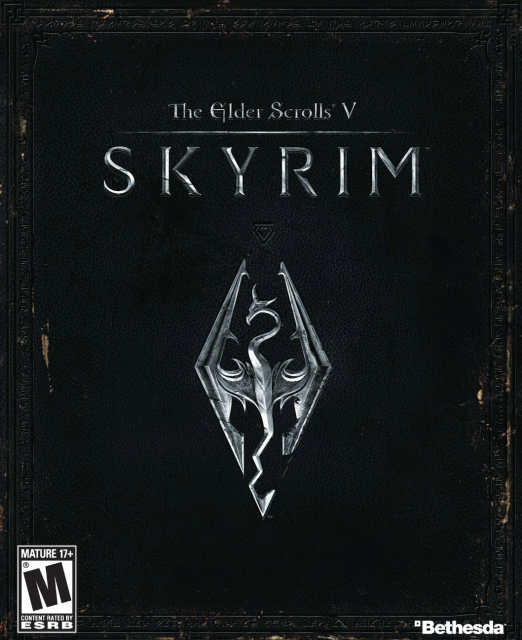
Now we get into the Norse-a-likes. While The Elder Scrolls: Skyrim isn't set anywhere near a real version of Northern Europe, its titular region on the continent of Cyrodiil is nonetheless steeped in Nordic flavor, from the vague stab at a Valhalla-esque afterlife to the runic iconography found scattered across its dusty, wintry dungeons and bucolic thatched-roof hamlets. Skyrim was an impressive achievement in its day: a fully-realized world replete with natural vistas and creaky ruins that felt more lived-in than any Elder Scrolls game prior. The people even looked like people! Mostly.
Naturally, there's not going to be a lot of direct references to Norse mythology. The Elder Scrolls has its own pantheon of Gods - the Nine, a coincidental number given the number of "realms" in viking lore - and its demons are specifically that of the Daedra, which aren't really based on anything besides maybe heavy metal album covers. The sagas and ballads of the Nords and their heroic deed mirror definitely evoke Norse culture, though, and the idea of a world-ending serpent that the player must thwart is at least somewhere close to the mark. I suppose it's more of a credit to the game's worldbuilders that they managed to make a game feel so very Norse-inspired without letting that subsume or overwhelm the franchise's own bespoke mythos and history.
Rating: Norse-Norser.
Might and Magic IX

Might and Magic's glory days ended around either entry VI: The Mandate of Heaven or VII: Blood and Honor, depending on who you ask. VIII: Day of the Destroyer was an interesting mix-up that nonetheless did not reach the highs of the prior two games due to some odd design choices, and after that the series went on the decline due in large part to the disaster that was Might and Magic IX. Now, it should be said the game itself isn't necessarily terrible, at least not in its current patched form; it's just that it was clearly hurried out the door in an incomplete state because the developers were close to collapsing from financial ruin, leading to what was less of a swansong and more like the noises a swan makes after being run over by a motorboat and getting caught in the propeller.
However, Might and Magic IX - in a desperate attempt to find a voice to call its own - did crib a lot from Norse mythology for its concept and world. The player-generated party is given a "Writ of Fate" early on by the local version of Odin, which promises that they will unite the warring Jarls of the land against their sworn enemy: a warlord from the East loosely based on Genghis Khan or Attila the Hun. After crashing and burning spectacularly due to a betrayal of a close ally, you find out that this Eastern fellow also has a Writ of Fate that says he'll conquer the world. It all turns out to be a scheme of "Njam the Meddler" (I wonder who this is based on?) to take over the pantheon, whom you must eventually help trap in an everlasting ice prison with the other Gods' help. A fun idea, especially the part where you have to fight your way out of the underworld, but like a lot of aspects about this game it wasn't quite baked all the way through.
Rating: Norser.
Viking: Battle for Asgard
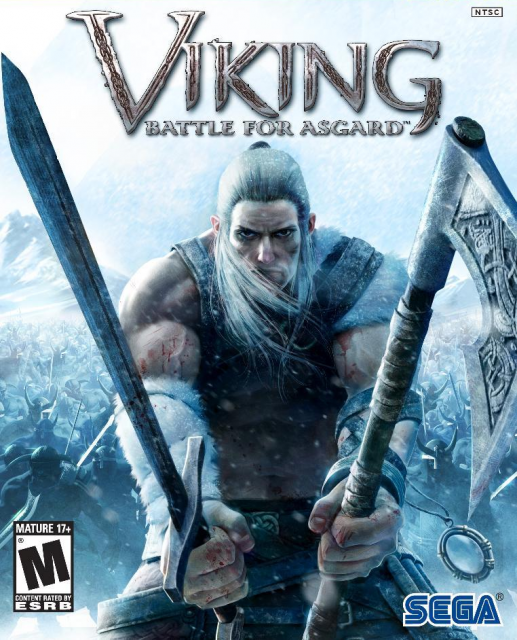
The Creative Assembly is better known these days as the Sega-owned developer who puts out all those tactical Total War games, most recently Total War: Three Kingdoms. However, back in the mid-00s they occasionally tried their hand at some console-ready action-adventure games, including Viking: Battle for Asgard. As Freya's champion Skarin, the player had to run around a big open map rescuing his countrymen while fighting off the undead forces of Hel. (In a coincidental parallel to God of War, The Creative Assembly's previous action-adventure game - that uses a lot of the same tech - was the Ancient Greece-inspired Spartan: Total Warrior.)
Lots of bonus points to hand out here. Both Freya and Hel are mentioned, as is Ragnarök, Fenrir the wolf god, and the realm of Midgard. You unfortunately never leave Midgard, and the majority of the game is spent hacking zombies apart rather than much in the way of cool encounters with various deities and fantastical beings. It gets the cold and grim tone right, at least.
Rating: Norser.
Heimdall

Heimdall was one of the earliest games to really do right by this particular mythos, as a 1991 release that has the titular would-be deity Heimdall be sent on a task to recover the weapons of the three major warrior Aesir: Odin, Thor, and Freyr. The game is an odd mix of genres, starting with a few action mini-games that determine Heimdall's stats and follower pool depending on the player's success, before moving onto an isometric action-RPG meat of the game that requires solving puzzles, reading runes, fighting draugr and elves and other creatures, and eventually solving Loki's riddles and recovering the weapons. For this feat, Heimdall ascends to join the Aesir and becomes the guardian of the Bifrost bridge.
Naturally, there's a lot of Norseness to be found here. Heimdall's journey takes him across three realms - Midgard, Asgard, and Utgard - and viking iconography and references abound. However, much of the actual gameplay is incidental to its theme: it feels more like a standard ARPG with a few Norse trappings more than anything. In addition, the game itself is a bit of a slog - it hasn't aged all that well, and like most ealry '90s RPGs it's tough to know what to do or where you should be going - but graphically it's very sharp considering we were barely into the 16-bit era at the time.
Rating: Norser.
Thor: God of Thunder
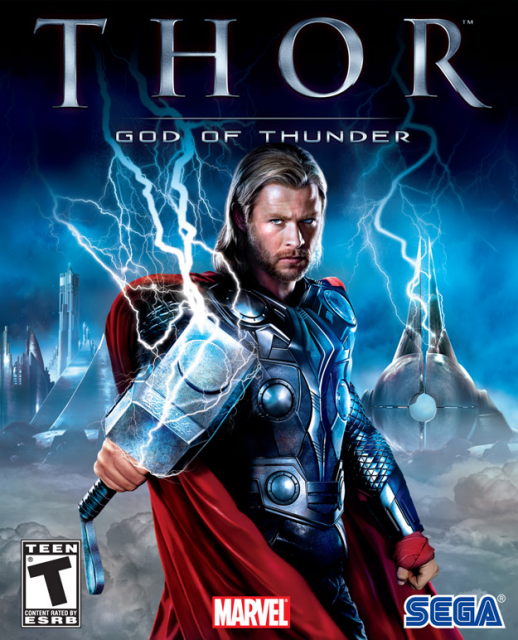
The success of the Marvel Cinematic Universe (and presumably that of 2009's Batman: Arkham Asylum) meant we briefly saw a number of superpowered character-action tie-in games based on Earth's Mightiest Heroes: I was a fan of the Captain America game myself, which transplanted Arkham Asylum's vaguely explormer structure to a German castle filled with Hydra agents. That run included this 2011 Thor game from Liquid Entertainment (WayForward did the DS port), which I only remember because of the Giant Bomb Quick Look where they kept cycling powers to make poor Chris Hemsworth say "thunder," "wind," and "lightning" in a constant cycle.
I mean, this one's kind of a cheat, but also kind of not. The Marvel universe's take on Asgard's favorite son isn't a trillion miles removed from its public domain source. The Thor comics have always drawn in a lot of characters and settings from that universe too, and this game - unrelated to the plots of any of the MCU Thor movies, beyond the main actors lending their voices - is no exception. Thor starts on Asgard training with Loki and Sif, moves around to Niflheim, Vanaheim and Muspelheim for various objectives, fights Jotun, Vanir, and Infernir, takes on Ymir and Surtr as major boss fights, and eventually saves the day. There's the small issue of these all being distinct characters within the Marvel universe, rather than the Norse originals, but that feels like a nitpick.
Rating: Norser.
Too Human
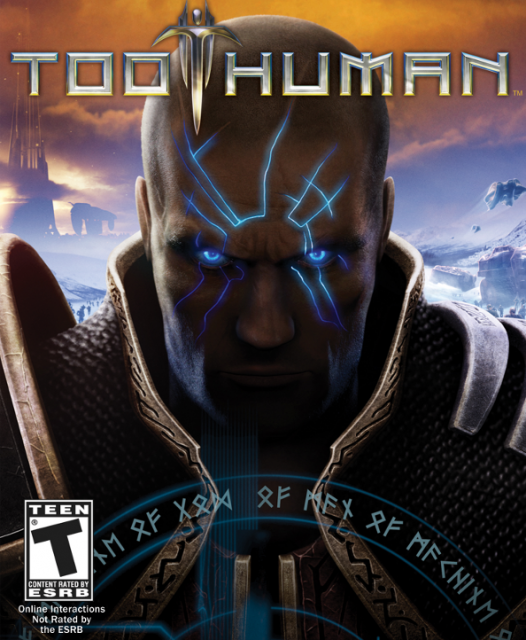
Too Human is proof that even if a game flies off the shelves, that's not necessarily a good thing. Despite an impassioned defense by Jeff Gerstmann and his Glock-wielding hoodlums Tico and Sho' Maker the critical response to Too Human was catastrophic to its fortunes, but even this proved to be the least of the game's issues. Due to some licensing/code-stealing lawsuit snafu with the owners of the Unreal Engine that was used to power the game - Epic Games, who I'm sure will add Too Human to their PC digital game store any day now - Too Human had to be removed from all commercial venues. It's reported that any unsold copies were subsequently destroyed, possibly in a burning longboat off the coast of Copenhagen. An ignominious end to a flawed game with a troubled history. Ain't game development grand?
Too Human may have had its downsides, but fidelity to Norse mythology wasn't one of them. Sure, they turned the gods into all into these weird cyborgs who owe their superhuman powers more to nanomachines than they do to ancient magicks, but you can't besmirch Silicon Knights' ability to dredge up every manner of Norse creature (which are all robots now) and Aesir with which to populate this sci-fi universe. Baldur's your protagonist, Thor and Heimdall are your buddies, Tyr and Idunn are vendors, Valkyries resurrect your ass every time you fall (though they're in no rush), ODIN's now a supercomputer, and Loki and his demonic children are the villains. I remember something about the Nirn playing a major part too, but truth be told I've blocked a lot of that game out. I... did not have a great time with this one, though I suppose I had more fun with it than Denis Dyack's lawyers.
Rating: Norser.
Valkyrie Profile

A rare Japanese take on the Norse pantheon, the Valkyrie Profile franchise - there's two main ones, a strategy spin-off, and a recent mobile game I know nothing about - invariably has you assisting one or more valkyries in their journeys to uncover grand conspiracies revolving around Odin, Loki, Ragnarok, and the einherjar that the Valkyrie are meant to shepherd into the afterlife. In addition to some incredible graphics (pixels for Lenneth, some motion-blur polygons for Silmeria) and a deeply intricate story, the games are best known for their "Soul Crush" combo-based combat mechanics, where all four members of a party attack simultaneously to create air juggles and other functional chains.
VP's mythology chops are fairly legit, taking the basis of the valkyries recruiting the honored dead for Valhalla and spinning that into a game premise that has you cycling out playable champions every chapter as you inevitably send your best warriors to Odin. Speaking of whom, he and his lieutenant Freya (who is less a fertility goddess here and more like the Norse answer to Darth Vader) are major characters and potential antagonists depending on how the game progresses, while Loki and Surtr are your other more traditional villain options. Most of the levels revolve around defeating Norse-related monsters with your team of dead heroes too, and of course Ragnarök and all its concomitant apocalyptic hijinks is an ever-present threat.
Rating: Norser.
Jotun
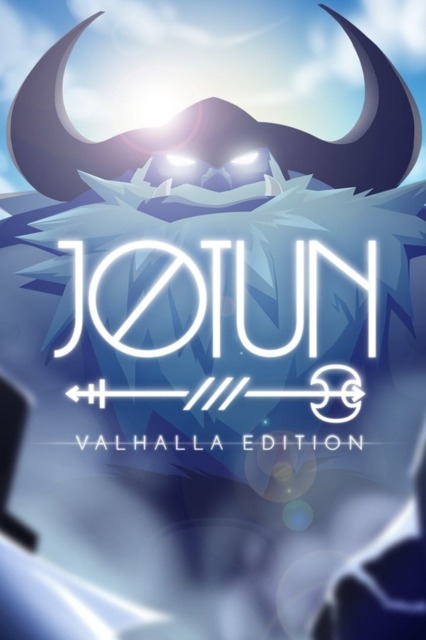
This well-animated Indie action-adventure has a great sense of scale, as your tiny viking warrioress is tasked with striking down a series of powerful elemental giants and their throngs of minions in a series of tough boss fights separated by some exploration and upgrades. The titular Jotun are truly colossal, easily twenty times bigger than yourself, and sometimes it's all you can do to evade their massive AoE attacks with the narrowest of margins while you whittle down the adds flowing in from various directions.
Jotun is also venerating with the Norse material, throwing in lots of little references to the world of Yggdrasil and Midgard and the other realms. Odin appears as the instigator of this little quest of yours, as well as at the end for the protagonist's final challenge, though besides the titular Jotun there aren't too many other NPCs. It's definitely a world brought to life through all those ancient writings, hitting places like the Lake of the Nine and eventually Valhalla in Asgard.
Rating: Norser-Norsest.
Ragnarok
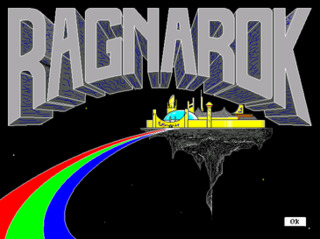
If you don't care about graphics, the '92 roguelike Ragnarok (also known as Valhalla in some regions) has all the ASCII goodness your unrefined palate can handle. Little more than a Rogue or NetHack that is awash with Norse mythology, the game is nonetheless extremely complex and very faithful to its source material. It also had a few conveniences uncommon to roguelikes at the time, like a saving system that only worked after so many steps (to prevent scumming) and a GUI that made it much easier to remember all the different commands you could use. The monsters were all drawn from viking legends also, and there's a huge number of them to memorize; it figures that most can hit you with debilitating conditions (birdlike "kalvins" can eat your eyes, for example, which is never helpful) or outright kill you, given that this is a roguelike.
The player is given multiple tasks to avert Ragnarök, or at least tweak the odds so the Aesir are more likely to win, and they range from recovering Odin's, Thor's, and Freyr's weapons (a common theme in these games), recovering Baldur's soul from Hel, finding Heimdall's horn Gjall so he can signal the start of Ragnarök to get everyone ready (I guess he plays Reveille on it?), and helping Tyr to fight despite losing an arm. These misfortunes are all events prophesized by actual Ragnarök legends, and so what you're doing here is a little bit of "mythological historical revisionism" to ensure these Norse gods, unlike the "real" ones, won't be caught with their breeches around their ankles.
Rating: Norsest.
God of War
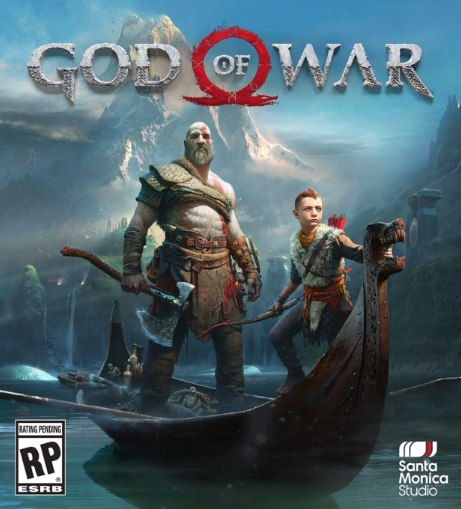
And finally, we have the 2018 God of War: the most recent game on this list and the most recent game I've been playing. Sony Santa Monica has put ol' Kratos through the ringer plenty of times in his native Greece, sowing a strong distrust in the deities who would play around with mortal lives, and giving him an overwhelming anger that propelled him to the titular divine role and even post-losing his powers. Turns out you can get a lot done if you're just angry enough. With this sequel, the world is expanded to be larger than ever before and filled with incidental details and side-questing if the core path proves too challenging or dull. While I love the combat and story, the side-content is what's really making this game for me. I'm inclined to 100% the game over the subsequent week, gabbing with the surly dwarf blacksmith brothers Sindri and Brok, and trying to locate those damn elusive ravens so I can clobber them with a well-angled axe throw.
I have to say the focus on Norse mythology in this game is insanely detailed, and it helps to have Mimir - a human enchanted with vision and genius beyond mortal ken - along to provide context to the ancient triptychs and scrolls that Kratos and his son Atreyus find on the road. There are multiple worlds to visit via Tyr's temple on the Lake of Nine, each of which has its own aesthetic and enemy population, and Kratos' journey takes him all over the place even if all he wants to do is scatter his dead wife's ashes and sulk back in his wintry hovel drinking fermented deer urine or whatever tipple they have out there in the tundra.
Rating: Norsest.

That's going to do it for now, but I'm sure I've missed dozens of pertinent examples. Be sure to fill my comments section with them, if you so choose. And also don't spoil God of War because I'm not at the end yet. OK BYE.
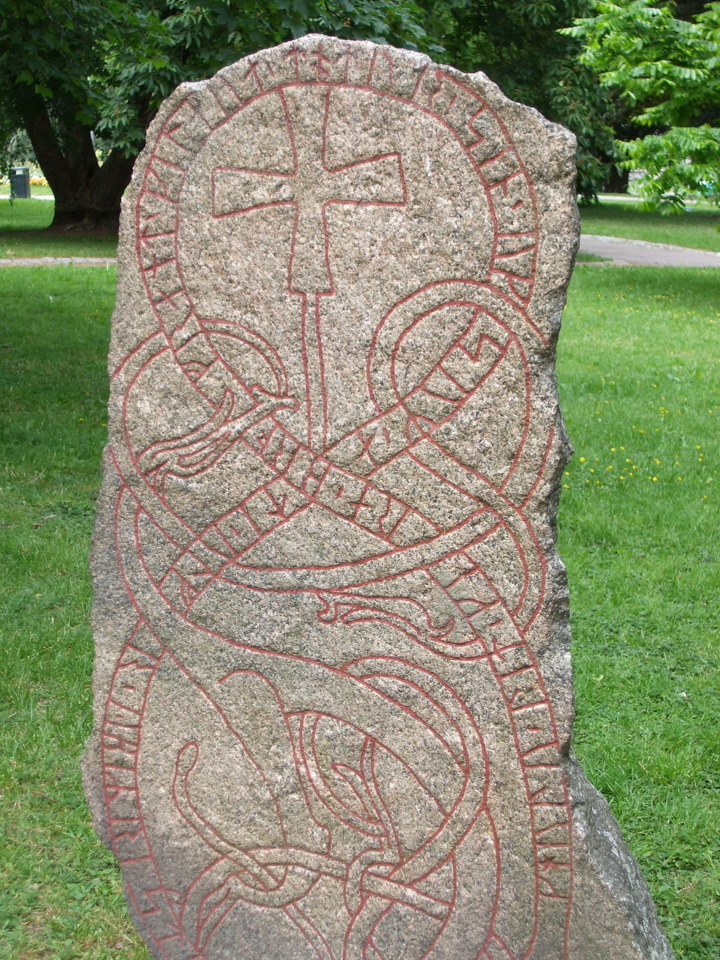
Log in to comment